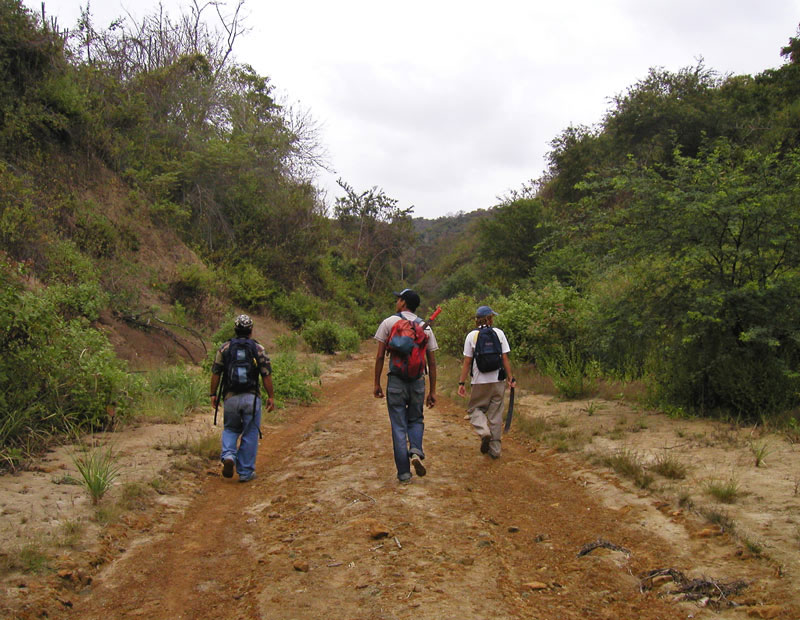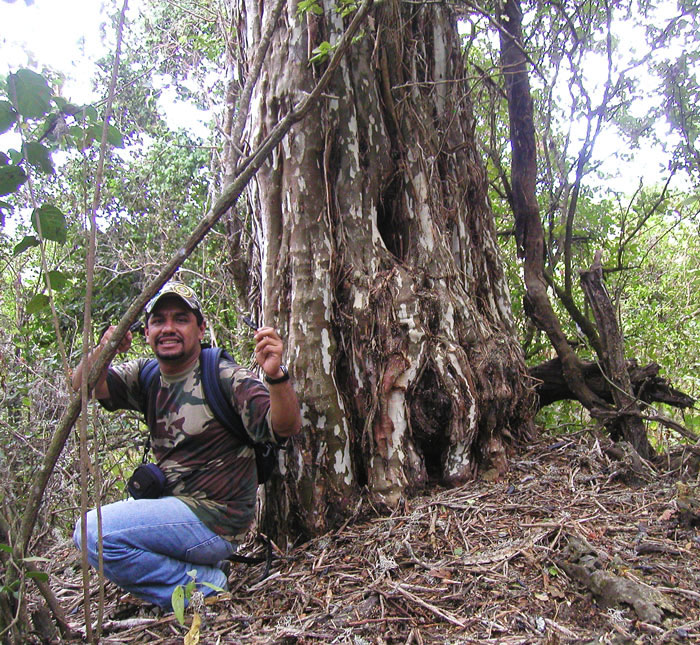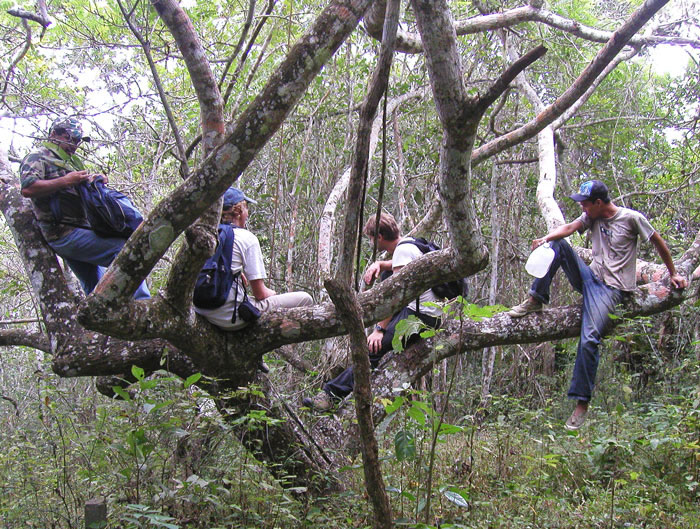July 21-August 1, 2008
Summary: We spend one week continuing the water routine, then it rains over the weekend and we get to spend the next week in the greenhouse and out in the field collecting seeds. Major progress is made in organizing, planting seeds and transplanting trees in the greenhouse.
On Monday we head to the Don Pepe revegetation site and water the trees. From there we walk to the greenhouse. At the greenhouse the seed bed and trees are weeded. Trees that have died are removed so that their 3-liter bottles and soil can be reused. More soil is prepared for the seedbeds and transplanting.
Tuesday we water the Reales Tamarindos site and then go to the greenhouse to transplant Algarrobos.
On Wednesday I stay home and take care of emailing and preparing a questionnaire for the final class of Bioregionalismo. The volunteers and Jaime go to the Fanca neighborhood and water at the Granja revegetation site.
On Thursday we all hike into the El Toro site and water there for the first time this year. There’s a microclimate in El Toro that keeps things slightly more humid than other areas. The trees look good, but are very happy to receive a dose of water. The soil rapidly soaks up the water poured on it.
Friday morning we do some house cleaning. I translate some of Ramon’s Bioregional Education reports and in the afternoon we all attend a barbeque celebrating the end of the twelve-week Bioregionalism class session.
Saturday night it rains fairly significantly for nearly the entire night. In the morning the ground is really wet. All of our sites received a nice portion of natural watering and we are spared a week of watering by hand.

Stephen preparing a seedbed.
Tuesday we’re back at the greenhouse. Seca seeds previously collected near Ramon’s house at Punta Gorda (8km south of Bahia) are planted in one of the seedbeds. More rearranging of trees is done. Some of the trees are growing so much that they need to be moved from the dirt onto bricks or their roots will grow through the holes in the bottom of the plastic bottles and into the ground below. Before going home we take a walk up into the hills behind the greenhouse to inspect a large Bototillo tree that has some good looking seed pods. We climb the hill and manage to knock a couple of the seed pods down, but the seeds are still green and not ready for collection yet. We’ll keep an eye on the tree and return in a week or two.

Wednesday we return to the greenhouse yet again and start the day off by refilling the soil in some of the sapling containers that have been in the greenhouse for a few months. As time goes by, the soil in the 3-liter bottles compact and refilling the bottles prevents water from draining directly down the sides of the bottles and out the holes. The fresh soil also gives the trees some new nutrients.

Andrew and Stephen refill bottles with fresh soil.
Then Ricardito shows up with his truck and we move a load of some of the larger trees from the greenhouse to the greenhouse extension on the other side of the University building. This frees up space in the greenhouse for new trees and since the floor in the extension is concrete, the roots don’t become stuck in the ground.
On Thursday there’s a field trip to Punta Gorda to look for seeds. A truck drops us off on the beach near Ramon’s cabin for a hike into the hills. Right off the bat we collect more Seca seeds. The seeds have passed through the digestive system of a cow so the meat of the fruit has been removed. All that’s left is the hard seed, perfectly dried and still intact.

Then we start hiking further into the forest. We pass large Palo Santo, Seca, Jaile, Ceibo, Cascol, Coca, Matapalo, and Guayacan trees.

We come across an enormous Cascol with good seeds scattered around its trunk. As we continue the hike we encounter a large strangler fig (Matapalo) which is in the process of over taking a large Jaile tree. The strangler is dropping tiny purple berries, each of which holds a seed. We collect some of the berries.

Farther along the trail a Guayabo tree, a dry tropical fruit producing tree similar to Guayaba, is dropping its fruit, which we collect for the seeds. Finally towards the end of the trip we pass a Dormilon tree that also has good looking seeds scattered below it.

The hike takes nearly five hours and after having passed along side of the El Toro watershed, we exit in Fanca and catch the bus back to Bahia.

Friday is a lighter day. I help Andrew conduct an interview for a school project he is doing on coastal disasters, in this case mudslides and erosion from the El Niño Phenonmenon in 1997-98. Stephen and Gina prepare the seeds we collected for drying. I translate some more of Ramon’s reports and Jaime takes care of watering at the greenhouse and site-scouts for more 2009 revegetation sites.
Pásalo bien,
Clay

Reader Interactions